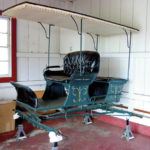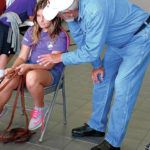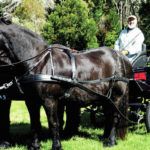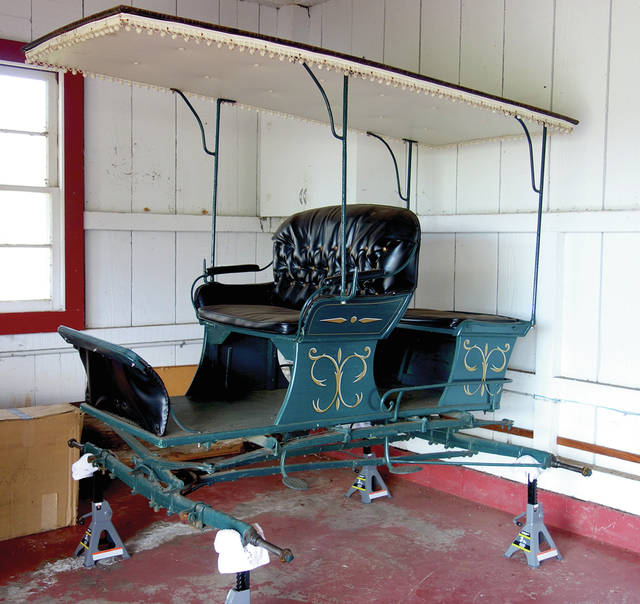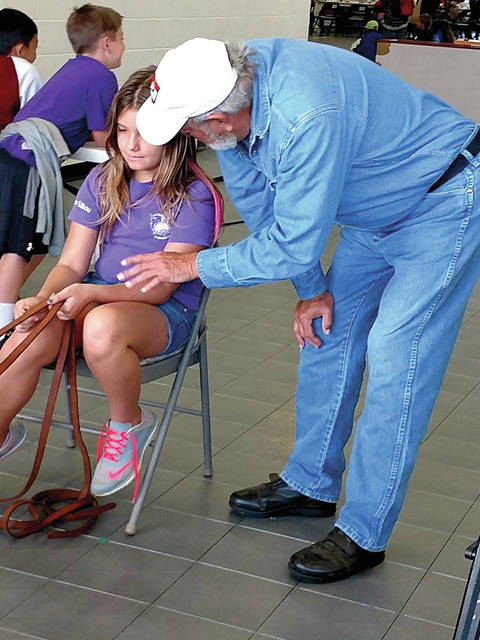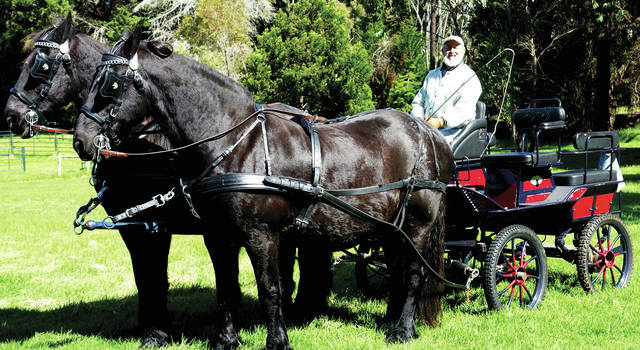NORTH HAWAII — There’s something special about a horse-drawn carriage ride.
The slow, smooth glide of the carriage along the road and the metronome clip-clop rhythm of the horse’s hooves make it a truly magical experience.
For many, a horse-drawn carriage ride is something they’ve only seen in Christmas movies or on the streets in New York City. But in North Hawaii, a real-life horse and carriage team can be seen trotting weekly along the Irish green hills at Waiki’i Ranch.
With its gently sloping pastureland, eucalyptus groves and cypress trees, the ranch is the ideal location for equestrian enthusiasts like Gary Grisham and his prized Friesians, Glybert and Hidde.
This year, his team participated in the Kamehameha Day parades in Kona and North Kohala in June, and Waimea Paniolo Parade in September. Earlier this month, his carriage and horses were also in the Waikoloa Village Christmas Parade.
When he’s not training and exercising “his boys,” Grisham also spends time restoring antique carriages and helping out with the Kohala Ride Wild 4-H Club in Hawi, where he teaches carriage driving to kids who want to learn.
The Friesian is a popular carriage and dressage horse whose name comes from its place of origin — Friesland — a province in the northernmost Netherlands on the North Sea. It’s cold there; hence the horse has longer and thicker tails and manes and three layers of winter coat, whereas most horses have two.
They’re also unmistakable from other breeds because registered Friesians are always black.
The horses are expensive and highly sought after due to their beauty, sensitivity, intelligence and personal attachment to their owners.
Even though he’d worked around horses while growing up, Grisham had never heard of Friesians. When he saw his first one, the earth moved … literally.
It was 1990 and Grisham, a career Navy man stationed at Pearl Harbor, was on assignment in Southern California when he read a story in the newspaper about an upcoming Combined Driving Event (CDE).
“I didn’t even know what a CDE was,” he remembered.
But because he was a horse lover and the event was publicized in the horse column, he decided to go.
He had parked his car and was walking toward an area where he’d seen horses gathering when suddenly the ground began to shake. Because he was in California, his first thought was: earthquake. Then he heard jingle, jingle, jingle and thought: Santa Claus. But this was August.
What Grisham saw next was a carriage and team of Friesians coming right at him.
“I looked up and saw the most beautiful horses I’d ever seen,” he remembered. “I was stunned and flabbergasted.”
The driver who carefully guided the team around Grisham later told him, “Your jaw was on the ground.”
His close encounter with the Friesians sparked an obsession with the breed and interest in carriage driving that has continued over three decades. His first driving horse was a quarter horse/Clydesdale named Toy that he trained with a single axle cart at the Gun Stock Ranch on Oahu’s North Shore.
A job transfer took Grisham to the Washington, D.C. area, where he bought a three-horse barn property on 8 acres in southern Maryland. He was now in Amish country and had a neighbor with a carriage-driving course on his own 40 acres.
It was time to trade up.
“I’d been playing around with a single for eight or nine years and thought it’s time to go up to a pair,” Grisham said.
And he really wanted a pair of Friesians.
There aren’t many Friesians in the U.S. — only about 7,000 compared to approximately 55,000 in the Netherlands and Germany and around 80,000 worldwide. After looking in North America but not finding a pair he liked, Grisham put the word out to the Dutch that he was looking. While attending the Royal Windsor Horse Show in England, he got a call about an available pair so he hopped over to Friesland to take a look.
Glybert and Hidde were half grown at 3 years of age when Grisham met them. Half-brothers born three weeks apart on the same farm, they were nicely paired. But they were green broke, meaning they hadn’t really been trained. When Grisham asked to take a test drive, their owner and his son tacked them up and put them to the carriage, nervous about what was to come.
As Grisham drove them down a narrow paved bike path into town, “They were as hard as lead and nearly pulled my arm out,” he said. But on the way back, they settled into their job, doing what they were bred to do, and were “just like butter.”
He was sold.
There are currently only 19 approved Friesian stallions in North America and 71 worldwide. To keep track of them and their bloodlines, all Friesians are chipped and judged to determining breeding suitability.
In the Netherlands, foals are inspected by Dutch judges at what is called a keuring. They’re chipped, and a hair sample is taken for DNA testing to make sure the foal matches to the mare.
At three years old they’re evaluated again. This time, they’re ranked for breeding suitability. A horse that ranks above average is considered qualified for breeding and moves on to a 70-day evaluation. Glybert and Hidde scored high enough to be registered Friesians.
To get them to the US, Grisham flew the horses from the Netherlands to New York on KLM Airline’s “Arc” – a part-passenger, part-animal transport. They were trailered from New York to Texas to L.A., and then flown from L.A. to Kona by UPS.
Grisham retired in 2008 and chose to live on the Big Island because it still has open space. He and the boys complete a two-and-one-half hour trek around Waiki’i Ranch three times a week, weather permitting. The trio is well known to ranch residents who slow down when approaching them, and many give a friendly wave and smile as they pass by.
The boys weigh about 1,400 pounds each and the carriage weighs 720 pounds. They can push up to twice their weight. Friesians in good shape can travel 18 mph for 10 miles before needing a break.
Grisham loves exercising the horses on the numerous trails at Waiki’i Ranch. The trails are frequently mowed, and the horses are almost on autopilot when it comes to avoiding natural hazards. They also enjoy the cooler weather, and the grass where they live is all they need to eat; Grisham does not supplement their diet.
They even have social time each morning with neighboring horses under a large tree.
It’s clear Glybert and Hidde are Grisham’s four-legged children. He’s taught them English since they knew only Dutch when he got them, and they’re now up to a vocabulary of about 25 words.
He also knows all their quirks.
“Glybert is clearly the boss even though Hidde does all the work,” he said.
And of the two, Glybert, is his gassy one.
“Jet propulsion,” Grisham laughed.
Like a proud parent, he enthusiastically shows off the horses and often takes guests along on their week-day rides.
“I feel very fortunate to have these boys,” Grisham said. “They are my family.”
